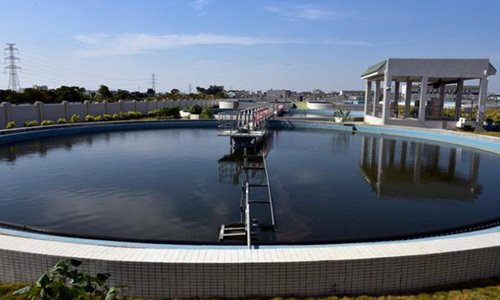What is the basic knowledge of MBR tablet film?
Published Time:
2022-06-17
In recent years, with the promotion of policies, MBR flat sheet membranes have developed rapidly in China. More and more environmental protection practitioners and companies have begun to learn and carry out related businesses such as product manufacturing, process design, and operation and maintenance management of MBR processes. Next, let's take a look at MBR flat sheet membranes:

I. Introduction to MBR flat sheet membranes
With the rise of the environmental protection industry in recent years, more and more supporting environmental protection products have emerged. As a good product, MBR flat sheet membranes play an important role in various sewage treatment projects.
1. Membrane element
The membrane element is mainly composed of a diaphragm, lining cloth, support plate, and inlet. The treated water after membrane filtration is discharged from the inlet through the support plate.
2. Membrane module
The single-channel double-layer flat sheet membrane module consists of an upper membrane support and a lower aeration tank. The membrane support contains a certain number of membrane elements, and each membrane element is connected to the water collection pipe through a transparent silicone rubber tube. The aeration tank contains an aeration pipe, which is used for aeration flushing to prevent flat sheet membrane pollution and provide oxygen for microorganisms.
II. Daily operation and maintenance of MBR flat sheet membranes
In the daily operation and maintenance management of MBR flat sheet membranes, the following specific work needs to be done:
1. "Before" - Observe the operation of the inlet pump to prevent the inlet pump from rising from the water due to liquid level meter failure; whether the power grid is blocked.
2. "During" - Observe the liquid level of the membrane tank to prevent the liquid level meter failure from causing the membrane module to overflow the membrane tank, paying attention to the effluent of the membrane module. Observe and record whether the aeration in the membrane tank is uniform, and open the aeration vent valve for 5-10 minutes weekly.
3. "After" - Observe and record the operation of all electromechanical equipment, as well as any noise different from normal conditions, observe and record the reading of the negative pressure gauge. When the transmembrane pressure difference reaches 35kpa, the membrane needs to be cleaned. Observe and record the flow meter reading, adjust the outlet valve of the self-priming pump to keep the flow within the design flow range. Observe whether the control panel is abnormal and whether the liquid level meter is working normally.
4. "End" - Observe and record the outlet, which should be clear and transparent, without any suspended matter.
5. "Edge" - Pay attention to the surrounding environment and do not allow sharp and hard objects to enter the membrane pool.
MBR flat sheet membrane technology is a new type of high-efficiency wastewater treatment technology that combines high-efficiency membrane separation technology with traditional activated sludge technology. Due to its effective interception effect, the membrane bioreactor can maintain the growth cycle of microorganisms and achieve deep purification of wastewater. At the same time, nitrate bacteria can fully reproduce in the system, with a significant nitrification effect, which makes deep phosphorus and nitrogen removal possible. The MBR flat sheet membrane uses aerobic microorganisms in the reactor to degrade organic pollutants in wastewater. At the same time, it uses nitrifying bacteria in the reactor to convert ammonia nitrogen in wastewater and remove odors generated in wastewater. The MBR flat sheet membrane achieves high-efficiency solid-liquid separation through hollow fiber membranes. Membrane bioreactor technology greatly improves the function of the bioreactor through membrane separation technology. Compared with traditional biological treatment methods, it has the advantages of high biochemical efficiency, strong resistance to load impact, stable effluent water quality, small footprint, long sludge discharge cycle, and easy to achieve automatic control. It is one of the very promising wastewater reuse treatment technologies at present.





